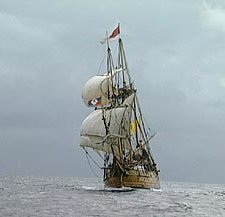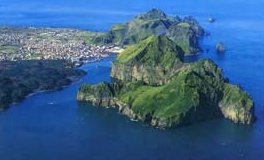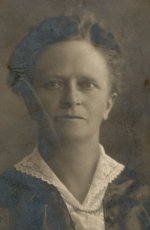I'm not much for movies. Not anymore. I can't stand the NOICE! But recently my 12 year old grandson took me to see the film "Pirates of the Caribbean". Johnny Depp was great and a good pirate and we had a good time together. All the three of us :-) On our way home from the movie I told Halfdan II (my grandson) about the pirates who came to Iceland in the old days and that visit was certainly not a pleasant one.

You know that story?
The story goes that four or five ships set sail in June 1627 to Iceland, navigated by pirates from Algerie in North Africa. Moslim people, seafarers from Algerie and Marocco, usually called "The Turkish barbarians" in the north of Europe, raided costal villages and cities where resistance was light and of course this small fleet headed for Iceland when they heard of that defendless country.
At first the pirates sailed to the East of Iceland, brutalizing peasants and fishermen; men, women and children alike, capturing 110 prisoners and killing nine people. While raiding the East fjords, another ships made their visit 20 June to the tiny hamlet of Grindavík nearby Keflavik in south west Iceland. The same barbaric deeds were done there as in the east, people captured or brutally killed. But this was not enough. The Westmann Islands, almost unprotected, was their next goal.
The people in Westmann Islands had already heard of the pirates and tried to prepare for some resistance but in vain and were outflanked by "these cold blooded murderers, who can only be likened to mad dogs" as it says in an account written by Kláus Eyjólfsson (1584-1674) on June 19 1627, shortly after the events themselves. "As they approached the settlement, they came to (the house) Ofanleiti, where they took captive the minister,
Ólafur Egilsson, along with his wife, two maid servants and a small child. The priest, however offered them resistance, so they struck him down and beat him .... then wounded him and hearded both him and his householders to the Danish houses . . . On the way they rounded up yet others whom they found and set fire to every house and hut along the way." And Kláus continues: "Anyone unable to keep up with their pace as they herded these captives to the Danish houses was cut down, and in their madness for blood these villains then chopped and hacked the bodies into small pieces with the greatest of enjoyment and bloodlust."
Peuh! Not a nice story and I didn't go into details when telling my grandson about the incident. The movie we had just seen, even though the story in it had been the holy truth, was nothing compared to what the victims of the "Turks" had to suffer.
 |
| Westmann Islands |
In all, some 350 men, women, and children were taken captive in these raids, mostly in Westmann Islands and the East Fjords, and of these only 27 ever saw Iceland again. Those who survived the voyage to Africa were transported in chains to marketplaces and put up for sale like livestock. However, the slaves could be ransomed out of captivity and Ólafur Egilsson, then 63 years old was actually sent on his own to Denmark where he was to implore the Danish King to pay for the freedom of his Icelandic subjects. But King Christian IV of Denmark was then at war and needed all money available for that purpose. So the following year (1628) only Ólafur and four others, who had been bought free, came back to Iceland. It was not until 1636 that the Danish King could afford to pay ransom for 37 Icelanders in Algerie. For several reasons only 27 of them came back to Iceland in July 1637, among them was a woman named
Guðríður Símonardóttir, ever after nicknamed "Turk-Gudda". She became wife to Hallgrímur Pétursson, reverend and a poet. His beloved Psalms of Passion (50) have been published more than 60 times in Iceland and translated to many languages.
Both Ólafur Egilsson and Guðríður Símonardóttir have thousands of descendants living today. Many of their descendants emigrated to North America. So probably some of you should try to prefigure your ancestor, standing in chains at a slave market somewhere in Algerie in 1627, stripped to the naked skin and valued as a livestock.
 You know that story?
You know that story?



 bravenet.com
bravenet.com

